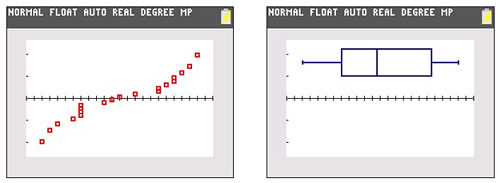Question - Suppose there are two companies, Clean Corp, and Dirty Corp, both of whom produce goods that result in a by-product of emitting phosphates, E, into local rivers.
For company 1, Clean Corp, its marginal abatement cost curve (MAC1) is given by MAC1 = 100 - E1. This can also be expressed as E1 = 100 - MAC1.
For company 2, Dirty Corp, its marginal abatement cost curve (MAC2) is given by MAC2 = 300 - 3E2. This can also be expressed as E2 = 100 - (1/3)*MAC2.
If we "horizontally sum" the two companies' MAC curves, or find total emissions for any common MAC value, we can find the aggregate MAC curve to society of reducing the two companies' total emissions of phosphates, ETotal = E1 + E2.
For any common MAC value less than 100, ETotal = E1 + E2 = 200 - (4/3)*MAC. Or, getting the common MAC term by itself, MAC = 150 - (3/4)*ETotal. (Not so relevant for this question, for any common MAC value between 100 and 300, ETotal just = E2 = 100 - (1/3)*MAC, or MAC =300-3ETotal.)
Meanwhile, suppose the marginal abatement benefit (MAB) to society of there being less phosphate in local river water can be given by MAB = (3/4)*ETotal. These aggregate MAC and MAB curves can be graphed alongside the individual MAC curves for the two companies.
Question 1: From society's point of view, what is the socially optimal level of aggregate emissions, ETotal*? What is the marginal abatement cost (to some company or other) of reducing emissions to this point, MAC*?
Question 2: Suppose the local council uses an 'equal misery' regulation to achieve this level of ETotal*. It tells each company that they can each emit at most ½ ( ETotal*). Find the cost to Clean Corp of reducing its emissions from E1 = 100 to E1 = ½ ( ETotal*). (Hint: think 'area of a triangle'.) Find the cost to Dirty Corp of reducing its emissions from E2 = 100 to E2 = ½ (ETotal*). Finally, find the total cost to the two companies of achieving the total emissions standard ETotal*.
Question 3: Suppose instead that the local council sets an optimal emissions tax of t = $75 per unit of emissions E on both firms. Let's start with Clean Corp. What level of E1 will it choose if it faces this tax? At this level of E1, how much does Clean Corp spend on reducing its emissions down from E1 = 100, and separately how much does it pay in tax to the council for the remaining E1 it still emits?
Similarly for Dirty Corp, what level of E2 will it choose if it faces this tax? At this level of E2, how much does Dirty Corp spend on reducing its emissions down from E2 = 100, and how much does it pay in tax to the council for the remaining E2 that it still emits.
Finally, find the total cost to the two firms of reducing their emissions, and find the total tax revenues transferred from the two firms to the local council.
Question 4: Suppose the local council instead implements a tradeable emissions permit market. It starts by giving away to each company permits to emit ½ ( ETotal*) each, but lets them trade permits with each other at whatever price settles out in a permit trading market.
At what price P* do economists predict that permits will end up trading?
What level of E1 will Clean Corp end up having permits for, and emitting? How many emissions permits will Clean Corp keep, and how many will they sell to the permit market? What revenues will Clean Corp gain from the permit market?
What level of E2 will Dirty Corp end up having permits for, and emitting? How many emissions permits will Dirty Corp purchase from the permit market? What costs will Dirty Corp have to bear from the permit market?
How much will Clean Corp have to spend on reducing emissions from E1 = 100 to its level with permits?
How much will Dirty Corp have to spend on reducing emissions from E1 = 100 to its level with permits?
